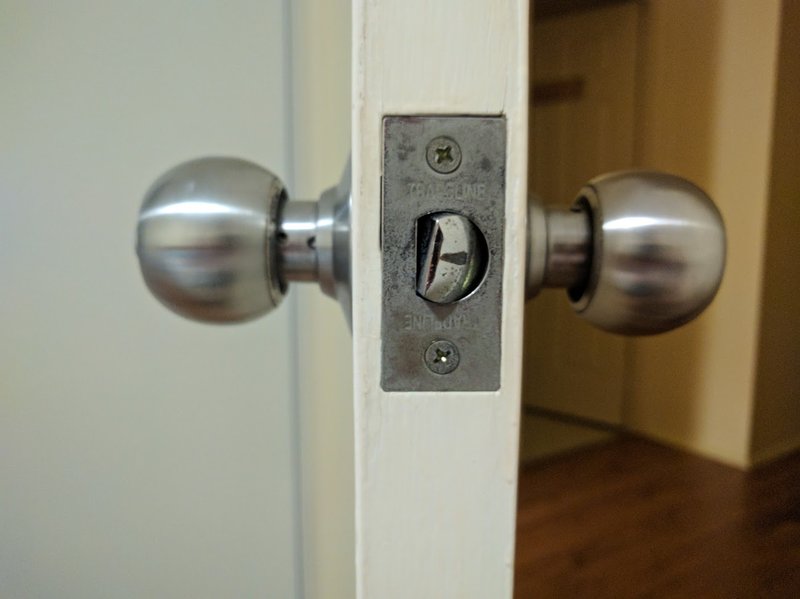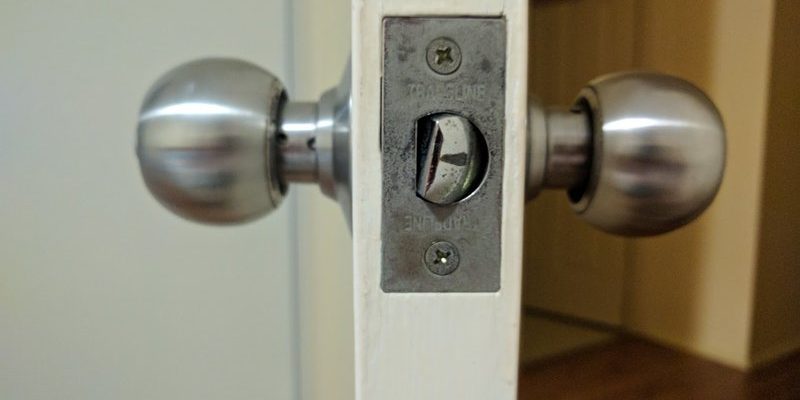
Let’s dive into understanding why this occurs and how you can set things right. Whether you’re dealing with a traditional deadbolt or a simple handle latch, a few straightforward adjustments can make a world of difference. Think of it like tuning a musical instrument; a little tweak here and there, and everything goes smoothly.
Understanding the Door Latch and Strike Plate
Before you start fixing the issue, let’s clarify what we’re working with. A door latch is the mechanism that catches the door and keeps it closed. On the other hand, the strike plate is essentially a metal plate installed on the door frame where the latch goes in. If they’re misaligned or one is damaged, that’s when issues arise.
Think of the latch and strike plate like dance partners. They need to be in sync. If they’re not, one will step on the other’s toes, leading to that scraping sound. The first thing you’ll want to do is assess their alignment. Stand in front of your door and closely observe how the latch fits into the strike plate when the door is closed.
Common Causes of Scraping
You might be wondering, “What causes the latch to scrape against the strike plate?” Here are a few common culprits:
- Misalignment: Over time, door frames can shift slightly. This often causes the latch not to line up with the strike plate correctly.
- Worn Components: Both latches and strike plates can wear down over time, leading to improper fit.
- Improper Installation: If the door was installed incorrectly, it might never have aligned properly in the first place.
- Humidity and Temperature Changes: These can cause wood to swell or shrink, affecting how the door closes.
Identifying the cause of the scraping is your first step in finding a solution. So, take a good look at your door mechanics.
Inspecting the Alignment
Now that you know what to look for, it’s time to inspect the alignment. This process is pretty straightforward and doesn’t require any special tools.
1. Close the Door: Start by closing the door gently.
2. Check the Fit: Look closely at where the latch meets the strike plate. Is the latch hitting the plate? Is it sitting too high or too low?
3. Use a Pencil: If you can’t see clearly, consider using a pencil to mark the latch position on the strike plate. This will help you visualize any misalignment.
After inspecting, if you notice that the latch does not align with the center of the strike plate, realignment is necessary.
Adjusting the Strike Plate
If the latch is misaligned, one effective way to fix the scraping is to adjust the strike plate. Here’s how:
1. Loosen the Screws: Using a screwdriver, gently loosen the screws holding the strike plate in place. Don’t remove them completely; just loosen enough to move the plate.
2. Move the Plate: Shift the strike plate up or down depending on where the latch hits.
3. Tighten the Screws: Once the plate is aligned correctly, tighten the screws back in place without over-tightening them, as this could cause more misalignment.
By following these steps, you should be able to prevent that pesky scraping sound.
Filing Down the Latch
In some cases, the latch itself may be the issue. If adjusting the strike plate doesn’t work, you might need to file down the latch. This could be necessary if the latch is too long or if the edges are rough.
1. Remove the Latch: Start by unscrewing the latch from its position on the door.
2. Use a Metal File: Carefully use a metal file to file down the areas where the latch is scraping against the strike plate. Make sure to file evenly to maintain the latch’s shape.
3. Reinstall the Latch: Once finished, put the latch back in place and check the fit again.
Remember, a little goes a long way — so take your time with this step!
Other Solutions to Consider
If you’re still having trouble after making adjustments, there are a few other solutions you can try:
- Adjust Door Hinges: Sometimes, the door itself may be sagging due to loose hinges. Tightening or replacing them can help with proper alignment.
- Replace the Strike Plate: If the strike plate is old or damaged, replacing it with a new one can resolve alignment issues.
- Install a Door Stop: A door stop can help prevent further wear by stopping the door from swinging too far.
These options may seem simple, but they’re surprisingly effective in solving the latch and strike plate issue.
Regular Maintenance is Key
Honestly, the best way to prevent a door latch from scraping against the strike plate is through regular maintenance. Check your door hardware every few months to ensure everything is aligned and functioning smoothly.
Here’s what you can do:
1. Inspect Regularly: Keep an eye out for any changes in how your door closes.
2. Lubricate the Mechanisms: Apply a little lubricant to the latch and hinges to keep them operating smoothly.
3. Tighten Screws: Periodically tighten any screws on the latch and strike plate.
By staying proactive, you’ll save yourself from those annoying scraping noises and potential repairs later on.
Preventing a door latch from scraping against the strike plate is all about understanding how these components work together. With a bit of inspection and some simple adjustments, you can eliminate that irritating sound and ensure your door operates smoothly.
Remember, think of your door latch and strike plate as partners in a dance; when they’re in sync, everything flows beautifully. So, roll up your sleeves, grab a screwdriver, and take the time to keep your door in top shape! It’ll be worth it when you can close your door with confidence and without that dreadful scraping sound.
